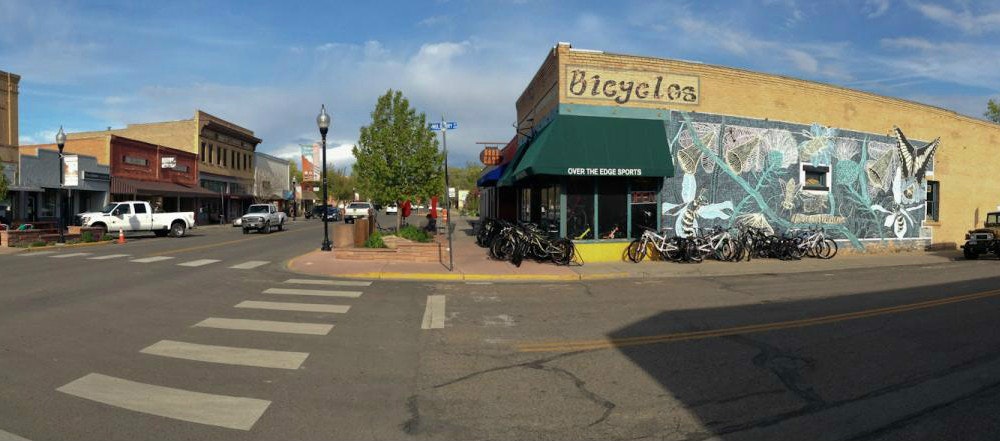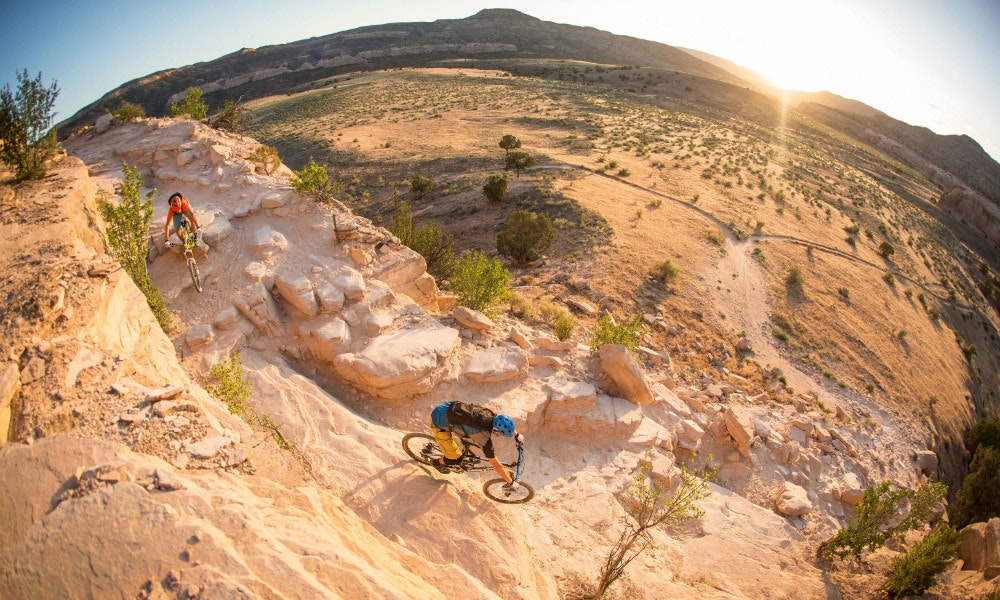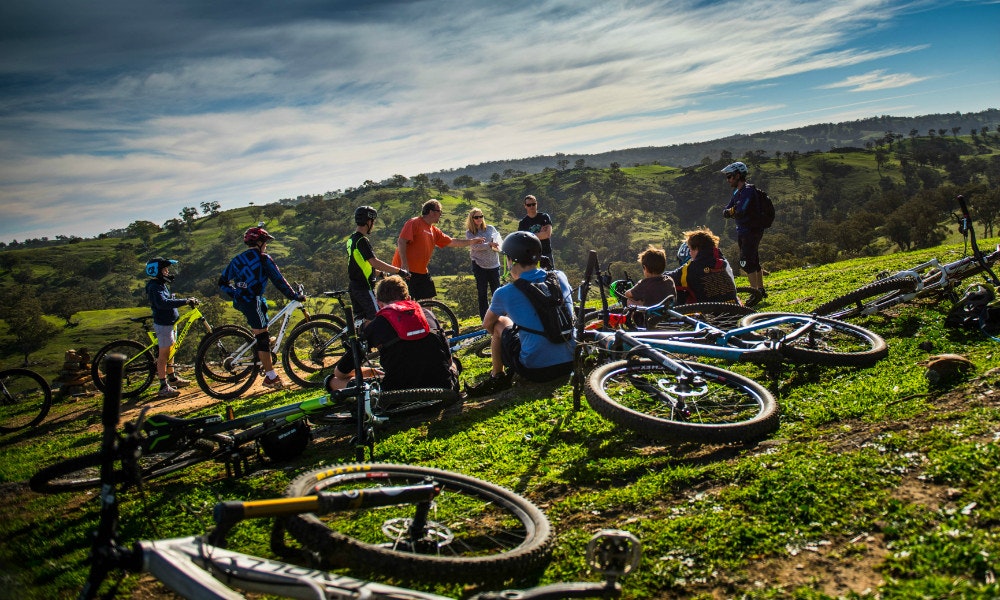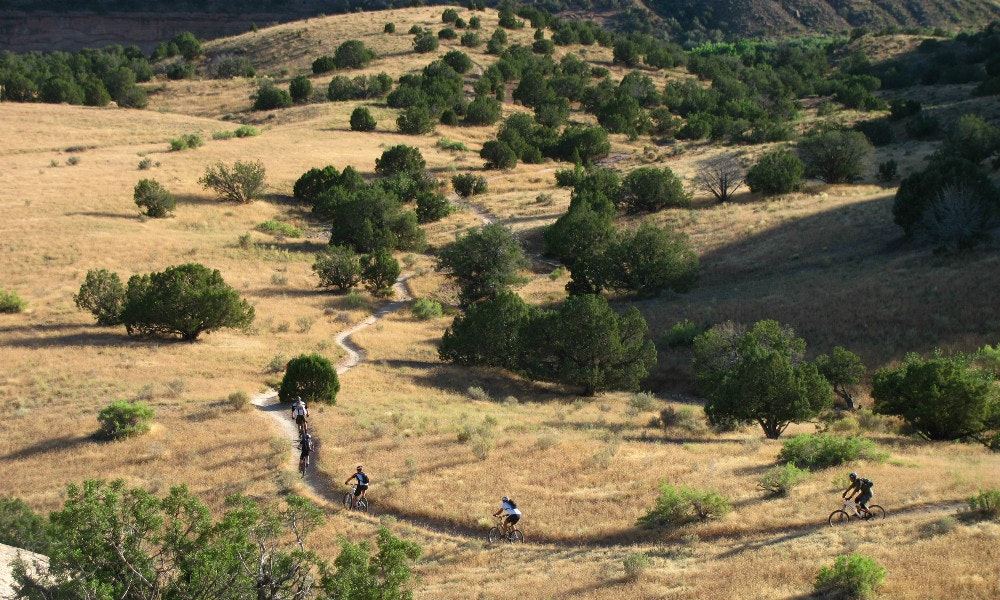“I’m going to tell this joke real quick to start things off…”
Before we had even met Troy Rarick we had heard a lot about him…we had even heard his joke. Some of what we had heard (i.e. his joke), while hilarious, we probably shouldn’t print here. But the majority of what we’d learned was in reference to the fact that he had singlehandedly transformed a derelict town in Colorado into a mountain biking mecca.
Troy recently gave a presentation at the second annual Australian Mountain Bike Summit sharing insight into how he managed to turn Fruita Colorado into the mountain biking destination it is today, while diving deeper into his personal philosophy that informs not only his riding and his business, but his outlook on life as well.
Fruita Colorado
In order to understand Troy’s philosophy, you first need to understand what he did to Fruita.
Troy grew up close to the epicentre of mountain biking in the United States in a town called Grand Junction, Colorado. 20 or so years ago, just across the border from Grand Junction in Utah, the town of Moab was the place to go to ride: Moab was where everything was evolving, where the best trails were, where the best riders were riding.
Troy had been offered the job of running Poison Spider Cycles in Moab, but he didn’t take that job. Troy instead decided to do his own thing.
Troy decided to drop $26,000 bucks on a 100 year old abandoned shack in Fruita – a little town just next to Grand Junction – and started his own bike shop, Over the Edge Sports.

Image credit: Just-Ann 2014
See also: Dave Donaldson talks about the evolution of NZ's top MTB destination
“And the industry made fun of me, did they not Scot Nicol?”
“I was the first one to make fun of you,” said Scot.
But Scot was also one of the first people to get Troy’s vision, encouraging other riders to hop over the border to see what he was up to in Fruita.
So why the hell did Troy decide to set up shop in Fruita when he could have managed a booming business right at the heart of the mountain biking community?
Because Fruita was smack-bang in the middle of a huge network of public land; land protected by the Bureau of Land Management (BLM). For about 100 miles in every direction, Troy said, was the possibility of creating amazing mountain bike trails.
But Troy’s ‘madness’ didn’t stop there. You might think he’d start by building the trails…after all, what use is a store where there is nowhere to ride? But Troy saw the potential for the two projects to mutually benefit one another while they grew.
“We would remodel the building in the morning, and in the afternoons we’d go out and build trails and tell the world this was going to be the next, coolest place to ride.”
Action vs. reaction
Mountain bikers for a long time had been simply making it up as they went along. They would use what they had and adapt it to make it work, from the bikes that they modified to the trails that they could ride. Riders like Scot Nicol and Troy Rarick were the first among a small group of riders to really look forward and start reverse-engineering the future of mountain biking.
“We kinda realised riding bikes on dirt was fun – Scot touched on that, how we came from this thing we made up – and we just fell in love with this sport, and we started building trails. We didn’t ask anybody’s permission, we didn’t let the government know where they were, we would just walk in the first twenty steps so they would never find them…”
But the idea became bigger than just building more trails. Troy saw the potential of Fruita as a destination; a place with the capacity to provide visitors with an experience that went beyond the fire trail.

Image credit: Caleb Smith
“In our lives; in this world we live in, the reason it’s kind of flipped upside down, is because we got taught to manage against fear, we’re trying to prevent our demise, we’re trying to keep things from going wrong. We’ve got a head space in us that we are just trying to avoid disaster at every moment. And that’s how we plan: backwards – even in mountain biking, that’s how we plan: backwards.”
This is idea is at the core of Troy’s vision: his philosophy of trail building; of destination building, we could call it. Troy imagined what it could be, and saw trails, and a bike shop, and cafes, and somewhere to drink beer afterwards, and somewhere to stay the night so people could do it all again tomorrow — and, would want to come back.
“The worst thing you can ever do to your mountain bike destination is to build trails they come to one time, and then they never come back.”
It’s fair to say that Troy didn’t necessarily start with this whole idea fully formed right away. He had is fair share of pull-your-hair-out moments with local governing bodies. What he did do is create an experience for riders who wanted to dig in the dirt and be a part of something new, that they could partly lay claim to. He started with the realisation that the trails and the bike shop needed to work together.
"Say no untrue thing.”
Today, there are plenty of trails. Back in the mid-nineties, there might have been some truth to that infamous statement, “build it and they will come.” But for Troy, that is (now) an untrue thing. Troy has a natural aversion to untrue things. We all love trail, but the emphasis needs to be on quality over quantity.
So how do we go about building mountain bike destinations today when the promise of more trail isn’t enough?
Well firstly it’s important to understand the distinction between what Troy and other successful destination builders did, and what they planned to do.
Troy explains that everyone tries to emulate other world renowned destinations in their planning; to do what Whistler did, or what the guys at Rotorua did. This is reacting. This is planning backwards. This is looking to the past for guidance. Troy suggests that we should not look backward until we have first created a clear picture of what that destination will look like; not only for ourselves, but for the people who we want to visit. Then we can start to look back at each proposed stage that led to the success of our destination from the point of view of the end goal itself. Imagine the ‘success story’ strung out through time, with all the individual steps it took to create it – the meeting with local council, the growth of the local café, the finished trails, the bike shop, the pub, the motel – neatly in their place along that timeline. Then, and only then, can you start looking back, reverse engineering that success story, from the point at which you believe it will one day arrive.

Image credit: Sam Bruce
See also: talkin' trail with Bocky and Dave from Buller
Pull, don’t push
“It’s a waste of your planning process to push things around…pull them! We want to pull people…being so sure of this picture that you’ve painted in your head that everybody just wants to come along with you.”
If he’d had some magnets, Troy said he would have passed them around. They perfectly symbolise what he is talking about.
Obstacles are always going to come up throughout that planning process: it’s how you approach them that can make all the difference to the end result. Unfortunately many projects don’t make it off the ground due to unforeseen road blocks.
“Seek your outliers. If you’re in a community and you’re planning a mountain bike project, you’re going to have people in that community that think you’re completely full of sh##… Find them: don’t wait for them to stand up in a meeting and tell you why they hate your project.”
You need to be thinking about who might be against your project, but also who is likely to want to come. Troy explains that you need to be imagining who else is going to go there, who else you want to go there, and what the experience is that you want them to have. Who are you pulling and where are you taking them?
“We just want more butts on bikes.”
Another untrue thing. You don’t want just more butts on bikes, Troy said. You need to think about your potential customer, and the experiences they are going to have while they are there. More people on your trails is not always a good thing. If you have lots of inexperienced tourists showing up with e-bikes, the enthusiast mountain biker isn’t going to feel welcome anymore, and they are your most important customer.
There are so many factors that construct the overall experience of your mountain biking destination, and those factors are changing every day. In a world that is finally realising the benefits of less cars on roads, should we be building trails that require a car to get to them? Or can we start to design trail systems that make use of existing public transport systems, or that link up with the roads and trails close to town centres enabling riders to ride to the trail head?
Every proposed destination is different: they all have their own unique audience that you want to attract, and distinctive experiences that only that place can offer them. But the bottom line is this, according to Troy (and let’s be honest, according to most of us):
“Every trail starts at coffee, and ends at beer.”
If you nail those two things, fill the gaps in between, and convince people it’s worth doing it all again in the morning, you’ve pulled them into something beautiful that’s worth building.

Image credit: Landon Monholland
See also: the future of MTB according to Ibis Cycles founder, Scot Nicol
A big thank you to the team at Mt Buller for putting on a fantastic event and to the Mt Buller Chalet for accommodating us.
Keep up with news, reviews, and more from the 2015 Australian Mountain Bike Summit - follow us on Facebook or subscribe to receive our regular email




